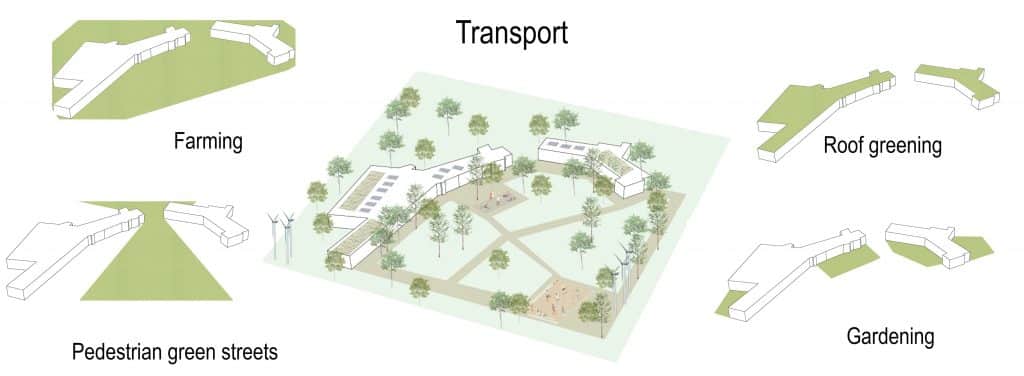Group L: Fellbach East
The city of Fellbach with around 44.000 inhabitants is located in the east of Stuttgart. Together with the city of Waiblingen, it forms a medium-sized center (dt. Mittelzentrum) for the surrounding communities. The cityscape of Fellbach is characterized by three historic city centers and new residential areas, shopping centers and business parks, which are mostly on the edge. The strongly differentiated, heterogeneous structure of uses has created a patchwork of buildings of different sizes and almost no design concept. Public space is weak, car traffic dominates the area and green structures are separated.
The question is how to deal with green spaces on the fringes of our future cities. What will the rules for new building structures and a new creative urban pattern in the region of Stuttgart look like.
Metropolis infill 2100
The students of this project imagine a constant growth of the cities of Fellbach and Waiblingen as well as the incorporation to Stuttgart. Living space is rare and people more often live in big communities to split tasks and support one another. A pattern of infills represents space for future living, working and leisure habits. A toolkit helps to create the infills. It includes four typologies: Productivity, Public, Housing, Transport. All functions can be mixed together as needed inside those typologies to create a sustainable, liveable and heterogenous pattern. Instead of private transportation, as we know it today, cities will have autonomous car sharing and a rail network as public transport infrastructure for private and commercial purposes.

| Students: | |
| Lucía Victoria Britti | UBA FADU, Buenos Aires |
| Sofía van den Heuvel | UBA FADU, Buenos Aires |
| Luis Carlos Villagra Covarrubias | UTFSM, Valparaiso |
| Lidess Msiska | Mzuzu University |
| Jonas Kern | HfT Stuttgart |
| Teachers: | |
| Prof. Detlef Kurth | Technical University of Kaiserslautern, Faculty of Spatial and Environmental Planning, Chair of Urban Planning |
| Aida Nejad | Technical University of Kaiserslautern, Faculty of Spatial and Environmental Planning, Chair of Urban Planning |
| Dr. Jorge Léon | Universidad Técnica Federico Santa María, Architecture Department, Chair of Architecture and Urban Planning |
